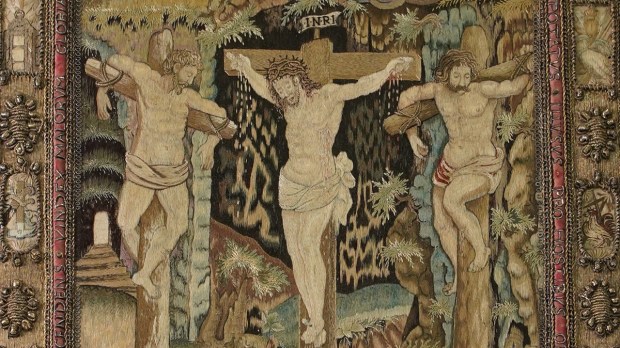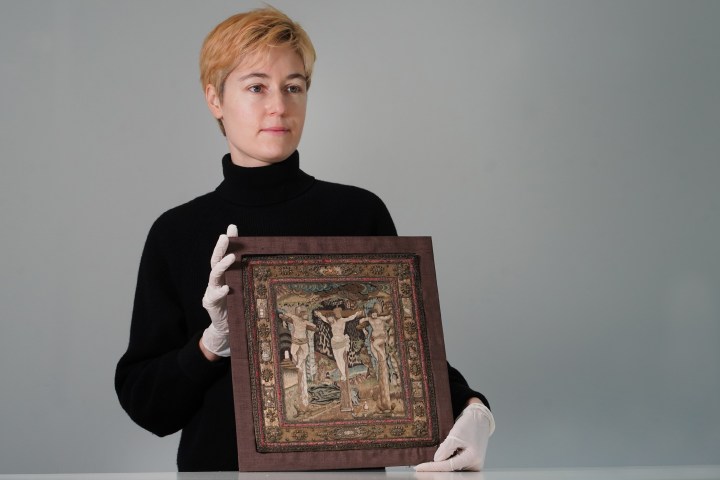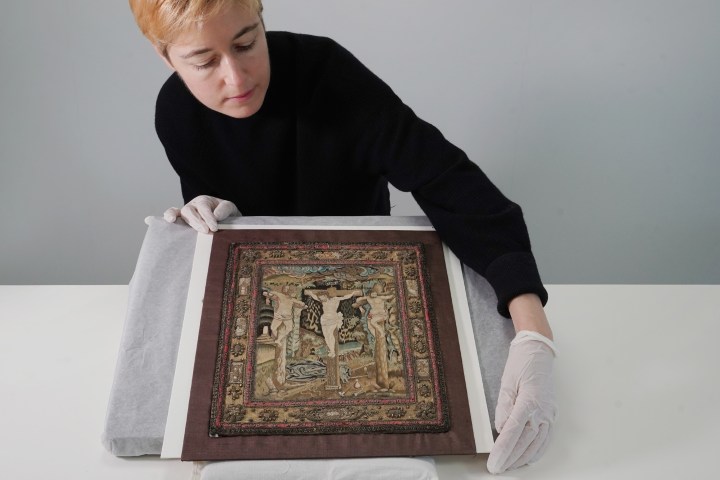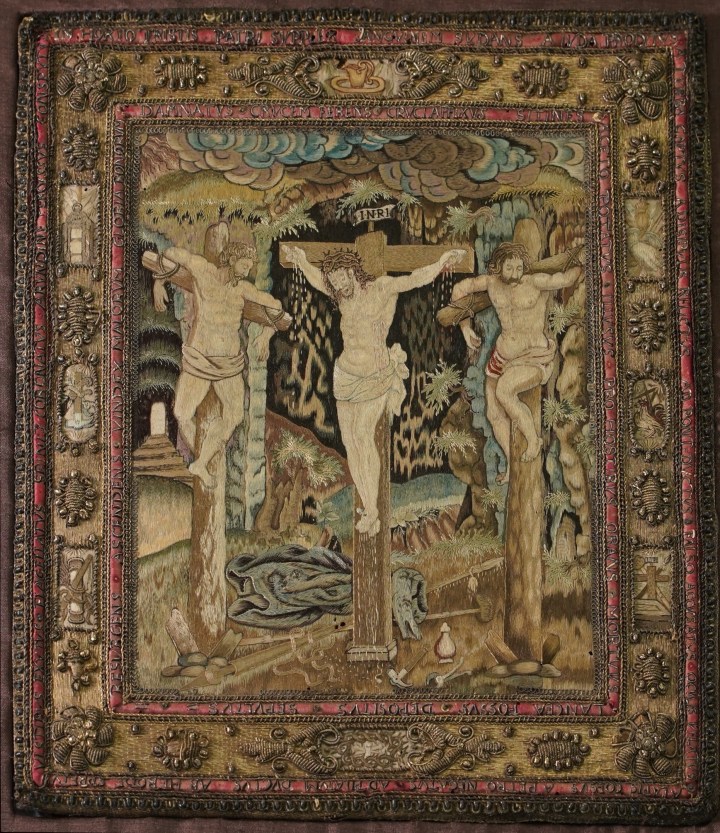A 17th-century embroidery of the Crucifixion, originally believed to have been sewn by Mary, Queen of Scots, has recently been donated to National Museums Scotland. This valuable piece of Catholic history is a remnant of the pre-Reformation world, which somehow survived a turbulent era during which the majority of Catholic paraphernalia in England and Scotland was destroyed.
The image features the crucified Christ set between the two thieves who were executed with him at Golgotha. The surroundings are richly detailed, especially for embroidery, showing lush grass and vividly textured trees. The sky bears rolling clouds that suggest a coming storm, while Christ’s clothes can be seen at the foot of the cross, cast beside tools of torture.
The embroidery
Senior Curator of Historic Textiles Helen Wyld points out some of the finer details in a blog post presenting the piece. She draws attention to the way the stitches were organized to resemble the strokes of a brush. For example, dozens of tiny individual stitches pour from the wounds of Christ to resemble trickling blood. It was for these fine features that embroidery was sometimes referred to as “needle painting.”
Looking close up, the viewer can start to get an idea of how many stitches were needed to complete this work. The figure of Christ alone would have required thousands of individual lines. While the entire work measures only 30 cm x 27 cm, each stitch is so minuscule that it suggests a deep devotion by the artist.
The artist
It is unknown who embroidered this image of the Crucifixion, but Wyld is sure that it was not Mary, Queen of Scots. Not only is it based on a print by Flemish artist Marten de Vos that was made 10 years after her death, but Queen Mary just wasn’t this skilled at embroidery. Examples of Queen Mary’s embroidery all exhibit a much simpler tent stitch pattern and feature far less detail.
That the work is attributed to Queen Mary at all is due to an inscription from Charles Howard of Greystoke (1630-1713), applied to the back of the wood foundation. Wyld explains that while it is probable that the embroidery was passed down through his family, its association with Queen Mary would have been a political tactic.
Politics
The rise of Protestantism in the 16th century brought with it a distaste for Catholic devotionals. In England and Scotland especially, objects of Catholic worship were gathered and in most cases destroyed. Despite this persecution, Catholics continued to practice their faith in secret and carefully protected devotionals such as this embroidery. That it survived s for so long could have been seen as miraculous to 16th-century Scottish Catholics.
Wyld suggests that Charles Howard inscribed the work in the 17th or 18th century in order to more closely link his family to Queen Mary, to lend more legitimacy to his bloodline and his Catholic faith. She wrote:
“It is significant that a Catholic family wished to stress their link to Mary, a Catholic monarch, at this time. The Revolution of 1689 had seen James II, a Catholic monarch and Mary’s great-grandson, ousted as king of England, Scotland and Ireland. And in 1707, the Union of the English and Scottish parliaments took place. In this period the exiled Stuarts – descendants of Mary, Queen of Scots – became a focus for both Catholic and anti-Union feeling. Charles Howard’s invented link with Mary was therefore a political statement.”
Read the full curation of this marvelous work of Catholic art at National Museums Scotland.






